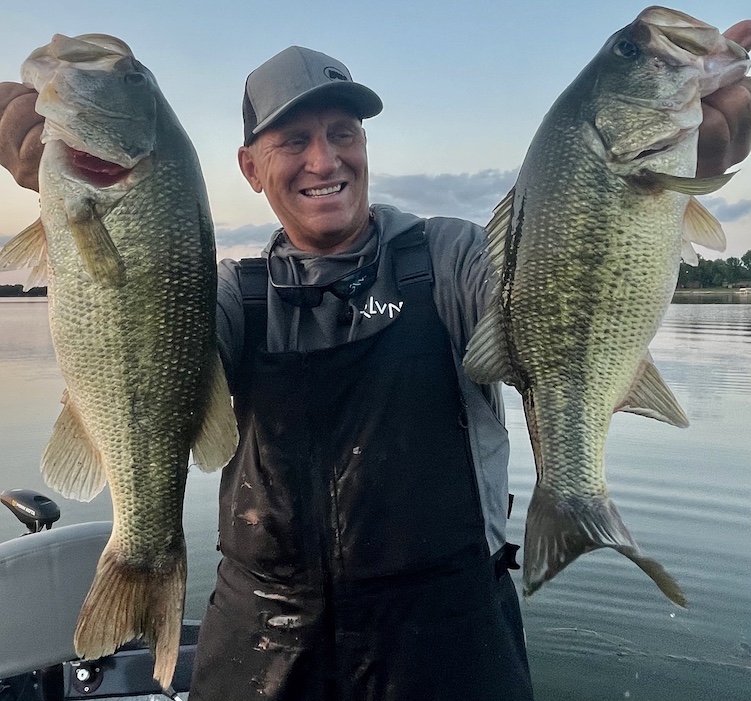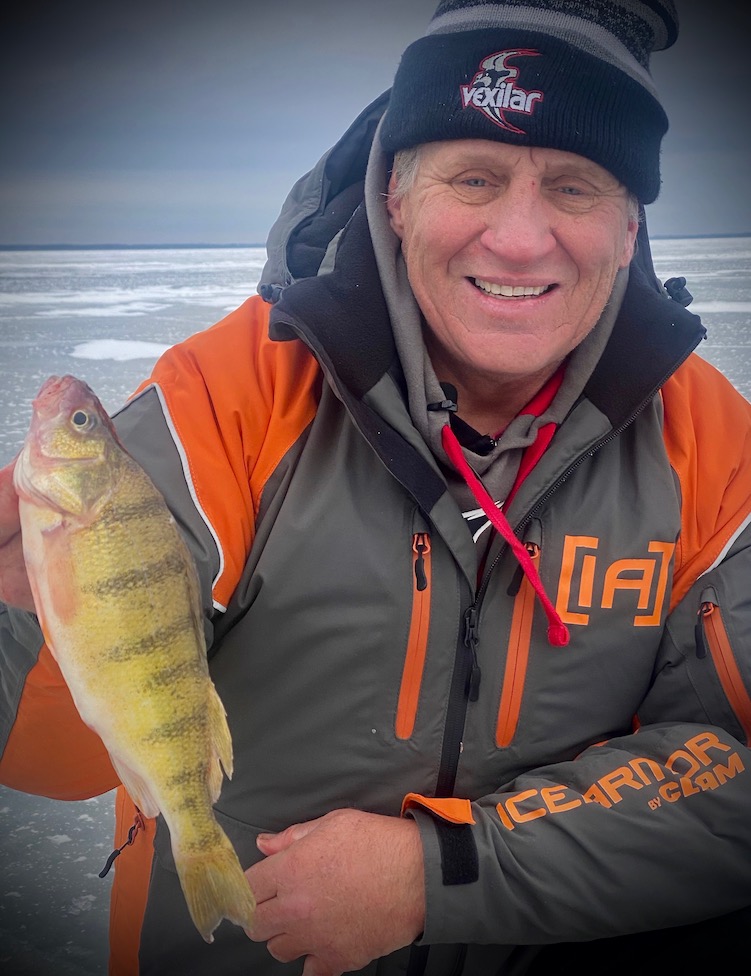News & Stories
Fishing the Midwest Returns!
Posted by director on December 19, 2021

**for immediate release--Elbow Lake, MN-- 12/19/2021
Fishing the Midwest Returns!
Fishing the Midwest, one of the Midwest’s longest running and highest rated regional fishing television shows, is set to kick off another airing season during first quarter, 2022! Fishing the Midwest airs on regional cable powerhouses Bally Sports North and Bally Sports Midwest and also on World Fishing Network. The series also appears on several additional Bally networks and network affiliates and cable providers too, including Midco across the Dakotas.
“Fishing the Midwest offers the most comprehensive list of TV carriers of any regional fishing television series in the Midwest,” said Bob Jensen, Fishing the Midwest’s founder and Hall of Fame angler. “Fishing the Midwest has always prided itself on providing pertinent and current fishing information and entertainment of the highest quality to anglers and viewers in our area of influence.”
“We continue to take viewers to top Midwest fishing destinations and show them easy-to-master fishing techniques that can be used on their next fishing trips,” said Mike Frisch, host of Fishing the Midwest. “Plus, we meet interesting folks during our travels and share their stories with our viewers too.”
In addition to television, Fishing the Midwest’s syndicated columns and “how to” fishing blogs run regularly on/in over 70 websites, newspapers, and outdoor publications across the Midwest and beyond. Additionally, Fishing the Midwest can be found on YouTube, Facebook, and Instagram.
Fishing the Midwest TV begins airing the weekend of January 1 and 2, 2022 on most carriers. To see a complete airing schedule as well as all things Fishing the Midwest, visit www.fishingthemidwest.com.
Big Stone: Winter Perch Galore!
Posted by director on December 17, 2021

Big Stone’s perch: a premier winter fishing opportunity
By Mike Frisch
Big Stone Lake is a premier multi-species, multi-season fishery. Located on the Minnesota/South Dakota border, this 26-mile long, 12,610-acre border water lake is well known for its open water walleye fishing. In addition to walleyes, however, the lake’s big bluegills and crappies are gaining notoriety and the lake is also home to some of the biggest largemouth bass in the entire upper Midwest as well.
During winter, however, the lake’s booming perch fishery takes over as Big Stone has lots of fat 9 to 11 inch “eater” fish that make great table fare! Though not known for giant perch, the number of quality fish the lake hosts draws winter anglers from across the country.
Artie Arndt, Ortonville, MN native and local bait shop owner also operates a winter fish house rental business on Big Stone, a business that caters to perch anglers. In addition to bait and fish house rentals, Arndt and his son, Tanner, are two of the best multi-season, multi-species anglers on the lake.
When questioned about the lake and it’s winter opportunities, Artie was quick to point to Big Stone’s outstanding perch numbers. “Perch are king during winter on Big Stone,” Arndt said when asked about ice fishing and this year’s outlook. “And, population surveys by the DNR show the lake has record perch numbers.”
Regarding prime fishing times, Arndt pointed to the season’s first several weeks. “The great fishing often happens during the season’s first half, we still have good fishing later, but it can get tougher with more snow and fishing pressure,” Arndt stated when discussing peak winter fishing times.
Arndt and his guides favor the lake’s southern end for finding Big Stone perch. “We spend most of our time on the lake’s south end,” Arndt said. He and his guides use a mobile approach to search for fish roaming the lake’s expansive 12 to 16 foot deep basin. “We stay on the move constantly looking for the schools because the perch move throughout that basin.”
Once found, Big Stone perch will eat traditional panfish lures like small jigging spoons as well as small minnows suspended under bobbers. However, Arndt says tungsten jigs and spikes are key baits most days. “Day in and day out it’s hard to beat tungsten tipped with spikes,” he offered. “Our waters are clear, and that small profile and live bait combination is hard to beat.”
Though the perch receive the vast majority of the winter attention, Big Stone’s big bluegills and walleyes appear some during winter too. “Perch anglers often catch some of those tank bluegills out in the basin with the perch,” Arndt said. “And, the walleyes have shown up some the past couple winters too.”
Big Stone Lake is a very popular winter fishery for good reason as it offers one of the hottest winter bites for perch anywhere. For anglers wanting to travel to the lake, information on fish house rentals and Big Stone fishing in general can be had by calling Arndt at (320) 839-2480. Also, information on the entire Big Stone area can be had by visiting the website www.bigstonelake.com.
Mike Frisch hosts the popular Fishing the Midwest TV series. Visit www.fishingthemidwest.com for more “fishy” stuff.
Color Considerations for Ice Fishing
Posted by director on December 9, 2021
COLOR FOR OPEN WATER AND ICE
by Bob Jensen
The color of a lure for fishing is one of the most popular topics of conversation among anglers who fish through the ice or in open water. To some anglers, lure color isn’t that important. To other anglers, color is very important. To the most successful anglers, lure color is one of several considerations. In a good number of situations, whether it be open-water or ice-fishing, the color of your lure can affect how many fish you catch.
It’s especially obvious while ice-fishing that color is important. When we’re on the ice, we keep a very close eye on the screen of our depth-finder. It will show you everything that is going on directly below that hole. If a fish comes in and looks at your bait but doesn’t eat it, you see it. If they look several times but don’t eat, something needs to be changed. One of the things that should be considered for change is color. There are times when fish are very color conscious. Following are some ideas on color that apply to open water and ice-fishing.
The general rule-of-thumb that many successful anglers use when selecting a lure is to go with a bright bait when there is only a foot or two of clarity in the water. Orange or chartreuse lures are popular. And you can’t go wrong by starting with a glow color in stained water.
When you can see more than a couple of feet in the water, life-like colors are sometimes better. Not always, but sometimes. Some anglers like a bait that resembles the primary forage fish in the body of water being fished. Other anglers reach for a lure doesn’t resemble anything that’s ever been alive in that body of water. They think that if the predator fish are seeing and eating the same thing all the time, something that looks completely different will be more appealing. Give them something different and they’re more likely to eat it. Several decades of fishing experience has taught me that sometimes in clear water fish like natural looking baits and sometimes they like baits that don’t look natural. Keep trying different colors until the fish show you what color they want.
Color can be especially important in ice-fishing. Fish can really study a bait when you’re ice-fishing. The bait is only going up and down, and usually pretty slowly. In open water, if you’re casting or trolling, the bait is moving, and often pretty fast. The fish in open water need to respond quickly. Under the ice, they can take their time, and if that bait isn’t exactly what they want, they don’t eat it. Lure action and size certainly make a difference, but so does color.
When it comes to figuring out what color to start with, there isn’t really a right or wrong way to go about it. Some anglers start with what worked for them most recently. Others use the water clarity concept: Clear water, natural colors. Stained water, bright colors. Drop Jigs have become a go-to for many ice anglers. They’re made of tungsten so they’re tiny. Because they’re so small, some anglers like to go with a bright color regardless of water clarity. They feel that because of the tiny size of the jig, the brighter color will help the fish find the bait easier. I don’t know if that’s the way it really works, but I do know that many of the anglers who go with that theory catch a lot of fish.
Some folks believe that the only reason baits are offered in different colors is so the lure-makers can sell more lures. The truth is, if that color doesn’t catch fish, it won’t be around very long. Next time you go fishing and aren’t getting bit as often as you would like, try a different color. Sometimes color will be the difference between catching a few and catching a bunch.
PHOTO CAPTION: Iowa Great Lakes fishing guide Laef Lundbeck knows that at times color can be a factor in fishing success. Laef picked the right color to fool this crappie on a January day.
